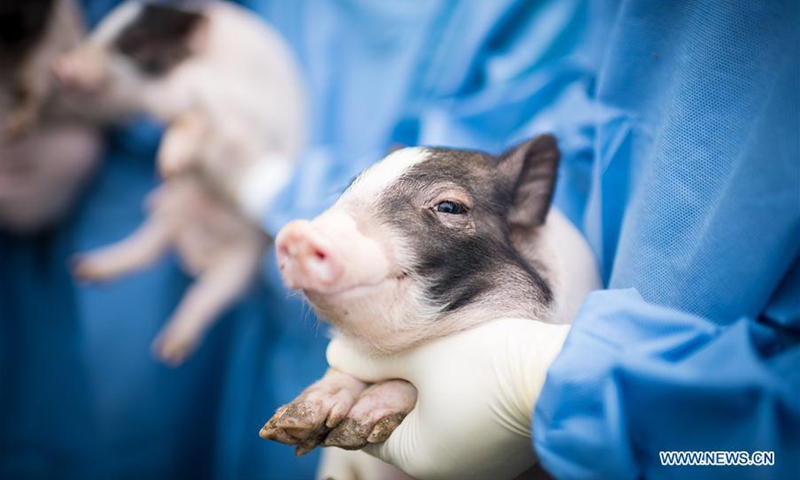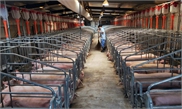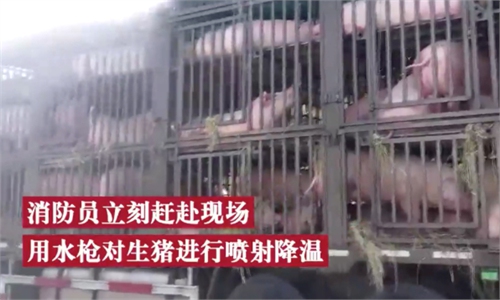Chinese scientists use GE technology to create 3 Bama miniature pig breeds for experiment use

In this photo handed out by the Chinese Academy of Sciences, a pig model for Huntington's disease is pictured at a laboratory in Guangzhou, south China's Guangdong Province, March 28, 2018. A Chinese team of scientists has established a pig model of Huntington's disease (HD), an inherited neurodegenerative disease, using genetic engineering technology. (Photo: Xinhua)
The Agricultural Genomics Institute at Shenzhen under the Chinese Academy of Agricultural Sciences (CAAS) and other institutions, including the Institute of Animal Sciences of the CAAS, developed three breeds of Bama miniature pigs for experiment use. They are recognized as new experimentuse animal resources that are collected by the National Infrastructure of Animal Model Resources, according to a report on the CAAS website on Monday.
Researchers got six pigs with double gene knockout - ApoE and LDLR - through their self-developed polygene precision editing technology. And by using genetic testing and other technologies, researchers successfully created three stable miniature pigs with diseases. These breeds have notable pathological features, with the average population of each breed exceeding 60, said the report.
Bama miniature pigs are genetically stable, highly inbred, small, inexpensive, and share anatomical and physiological similarities with humans. This makes the breed an excellent model for use in cardiovascular, gastrointestinal, renal system, and skin pharmacological and xenotransplantation research.
Developing new animal resources for experiment use is in line with China's strategic needs. The successful nurture of the miniature pig breeds has provided theoretical and technological support for gene-editing large animal breeds and is important for the country's life science research and development of bio-medicine, according to the report.
In addition, to independently develop new animal breeds for experimental use, China has promoted independent innovation to ensure its livestock and poultry breeding resources over recent years, with the self-sufficiency ratio of key livestock and poultry breeds exceeding 75 percent in 2021.
The CAAS has made significant progress in genome analysis, functional gene cloning, and key breeding technologies for major livestock and poultry such as pigs, beef cattle, goats, chickens, ducks and horses, providing a theoretical basis and technical support for genetic improvement and breeding. A number of functional genes with great breeding value have also been discovered.
The CAAS also pledges to collaborate with enterprises, set up innovation bases, and promote the application of breeding technologies, aiming to create a series of livestock and poultry breeds with international competitiveness.


